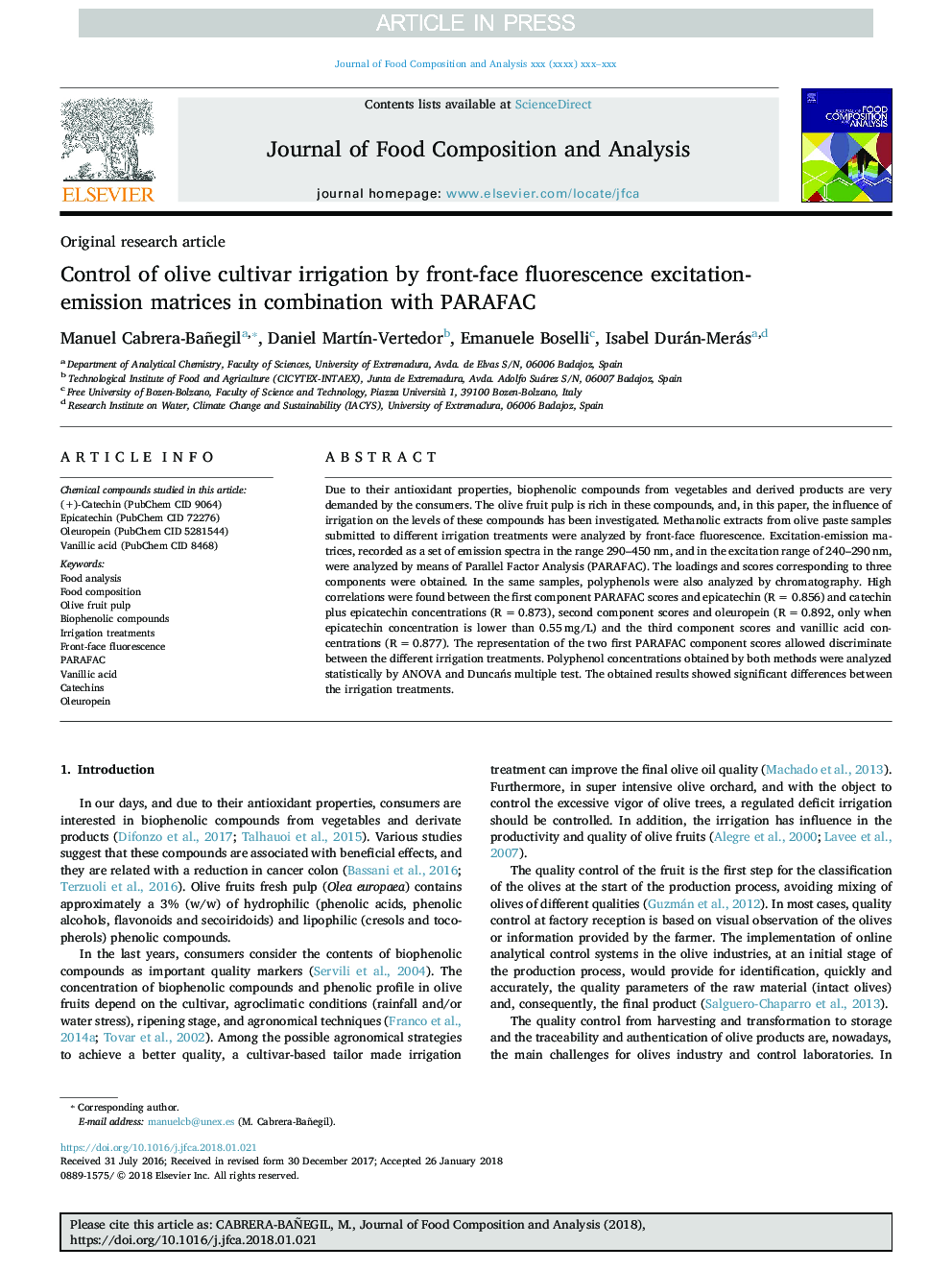| Article ID | Journal | Published Year | Pages | File Type |
|---|---|---|---|---|
| 7619704 | Journal of Food Composition and Analysis | 2018 | 8 Pages |
Abstract
Due to their antioxidant properties, biophenolic compounds from vegetables and derived products are very demanded by the consumers. The olive fruit pulp is rich in these compounds, and, in this paper, the influence of irrigation on the levels of these compounds has been investigated. Methanolic extracts from olive paste samples submitted to different irrigation treatments were analyzed by front-face fluorescence. Excitation-emission matrices, recorded as a set of emission spectra in the range 290-450â¯nm, and in the excitation range of 240-290â¯nm, were analyzed by means of Parallel Factor Analysis (PARAFAC). The loadings and scores corresponding to three components were obtained. In the same samples, polyphenols were also analyzed by chromatography. High correlations were found between the first component PARAFAC scores and epicatechin (Râ¯=â¯0.856) and catechin plus epicatechin concentrations (Râ¯=â¯0.873), second component scores and oleuropein (Râ¯=â¯0.892, only when epicatechin concentration is lower than 0.55â¯mg/L) and the third component scores and vanillic acid concentrations (Râ¯=â¯0.877). The representation of the two first PARAFAC component scores allowed discriminate between the different irrigation treatments. Polyphenol concentrations obtained by both methods were analyzed statistically by ANOVA and DuncaÅs multiple test. The obtained results showed significant differences between the irrigation treatments.
Keywords
Related Topics
Physical Sciences and Engineering
Chemistry
Analytical Chemistry
Authors
Manuel Cabrera-Bañegil, Daniel MartÃn-Vertedor, Emanuele Boselli, Isabel Durán-Merás,
